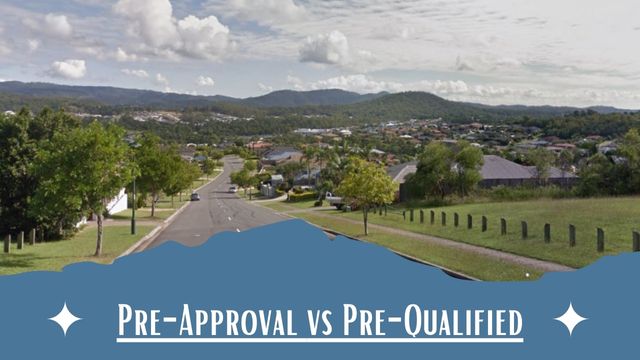
Some clients of mine have been using these terms interchangeably, not realising that both pre-approved and pre-qualified are two completely different terms when getting a home loan. Knowing the difference between the two is vital so you aren’t disappointed later on, and know the terms equips you with the right information.
If you have a pre-approved home loan it means that the lender has checked the information you have submitted and provided a figure they believe they may lend you, while a pre-qualified home loan provides you a figure the bank estimates it may lend to you without having verified your information.
It is important to note that neither of these guarantees that the lender will write the home loan. Your circumstances or the lender’s product could change from the time you received the information and the time you apply for the loan.
Pre-Approved
Getting a pre-approval requires a lot of the same steps as applying for a loan, getting the lender to assess your situation to provide an amount that they may lend you.
Information provided to the lender includes:
- Income
- Assets
- Liabilities
Pre-approval comes with more weight than a pre-qualified loan due to the verified information. Though this still can be affected by property valuations, changes in circumstances and property types. A good example would be if someone applying for a loan lost their income source or job.

Pre-Approval Process
The process to obtain a pre-approved home loan is as follows:
- Meet with your mortgage broker
At Read Finance we would first have a complimentary meeting to find out what you are after and to see what your financial goals are. Here we can provide you with documentation and answer any questions you may have. We will stay in touch with you through this process and after. - Documentation Request
You will need to provide the information and documentation that we request to fulfil the lender’s requirements and our compliance. - Conditional Pre-approval
Also known solely as a pre-approval, it will have requirements and conditions listed needed for them to provide the home loan to you. - Search for a Home
You now have an idea of how much the bank is willing to lend you as well as the conditions and additional requirements that you need to fill. Use this information while searching for your new property.
Common Conditions for a Pre-Approval
The conditions that a lender could give you varies for each person due to different lender product and current lender requirements. but here are some common conditions you may be provided with.
- No changes in your financial position.
- Verification on details you have provided.
- A valuation of the property that satisfied the lender.
These will be provided to you so you will be well aware of what they are.
Pre-Qualified
Getting pre-qualified will provide you with an estimate of how much you might be able to borrow from a lender. This is done without verifying your financial information and in turn, means that you have not applied for a loan.
Get Help
Getting professional help for one of the largest purchases in your life is important. Reach out to us at Read Finance and let us help guide you through the process.
Book a complimentary meeting where we can assess your situation and talk about whether you’re interested in a pre-assessed or pre-qualified home loan.







